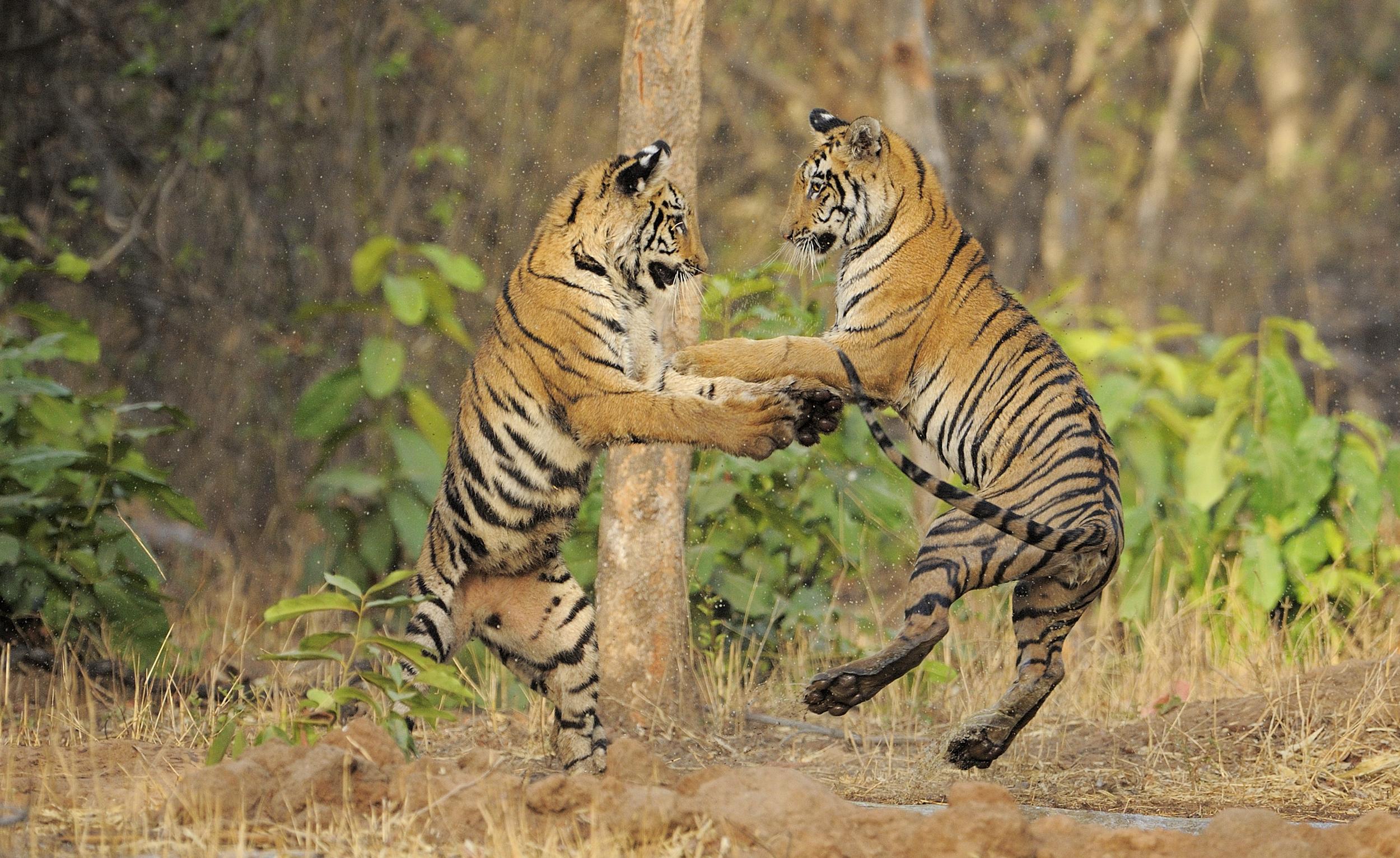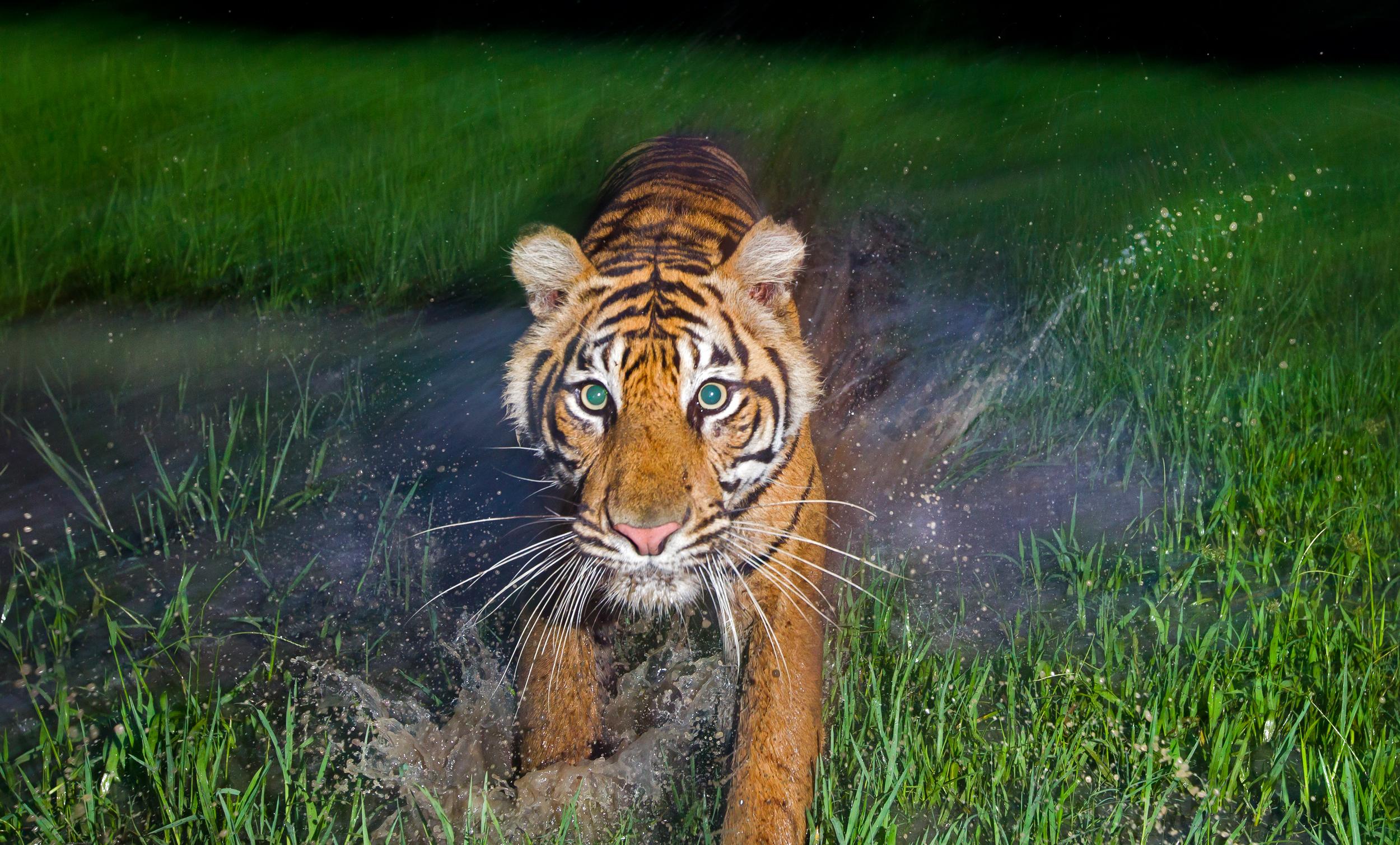I’m Richard and I’m a forests campaigner here at Greenpeace. I joined the forests campaign team back in 2013, and since then I’ve learnt so many interesting and surprising things about these amazing animals while trying to protect them. Here are my 10 favourite tiger facts:
1. Tigers have better short-term memories than humans
Tigers have one of the best memories of any animal, including humans. Their memories are made with stronger brain synapses which means that their short-term memory lasts approximately 30 seconds longer than ours does.
2. Tigers are great impressionists
In some parts of the world, tigers feed on bears because of overlapping territories. In order to lure the bears in, tigers are known to imitate the sounds of their prey. If you know any bears, share these tiger facts with them so they can stay safe!
3. A tiger’s back legs are so strong that it can remain standing even when dead
Highly unpleasant but very impressive fact alert: tigers’ back legs are so strong that they’ve been known to remain standing once they’ve been killed.

Tigers in Tadoba reserve. © Harshad Barve / Greenpeace
4. A tiger’s stripes are completely unique
No two tigers have the same stripes. Like human fingerprints, a tiger’s stripes are completely unique. But one thing most tigers do have in common is that the markings on their foreheads are the same as the Chinese character for “king”.

5. Tigers have excellent manners
Lions often fight over a kill (sometimes to the death) but when a tiger bumps into another tiger during a hunt, they’ve been known to share the catch together. Male tigers also often wait for females and cubs to feed first before they sit down to dinner.
6. Tigers can only purr when they breathe out
Like their domestic cousins, tigers can purr. But unlike house cats, tigers can’t purr when they breathe in, only when they breathe out.
7. Tiger urine smells like buttered popcorn
There’s an interesting fact for you – use it wisely.
8. Tigers are less likely to kill you if you look them in the eye
Tigers like to hunt by ambush. By looking a tiger in the eye, you’re showing it that you know it’s there. This, “they say”, makes it less likely that a tiger will attack you. But it’s not a theory I’m desperate to try out myself.

9. A tiger’s roar could paralyse you
A tiger has one hell of a roar. For one thing, it’s very (very) loud – a tiger’s roar can be heard from two miles away. But tigers have another secret weapon – and this is one of the scariest tiger facts I’ve ever learned. They can produce low pitched infrasound growls that are so deep that humans can’t hear them – though they sure can feel them. It’s this killer combination of an ear-splitting roar and a penetrating growl that causes momentary paralysis in humans.
10. Tigers have the brightest eyes of any animal
The eye of the tiger is backlit by a membrane that reflects light through the retina. Thanks to this, tigers have the brightest – and, in my opinion, the most beautiful – eyes in nature.

But, tragically, tigers are in serious danger. Their forest habitat is being trashed by palm oil companies greedy for quick profits.
When I first started work on the Greenpeace forest campaign back in 2013 I was really shocked to discover the impact that deforestation is having on tigers. Tigers used to be found right across Indonesia – in fact, there were three different species: the Balinese tiger, the Javanese tiger and the Sumatran tiger. Now only the Sumatran tiger remains – and there could be as few as 400 of these majestic beasts left in the wild.



